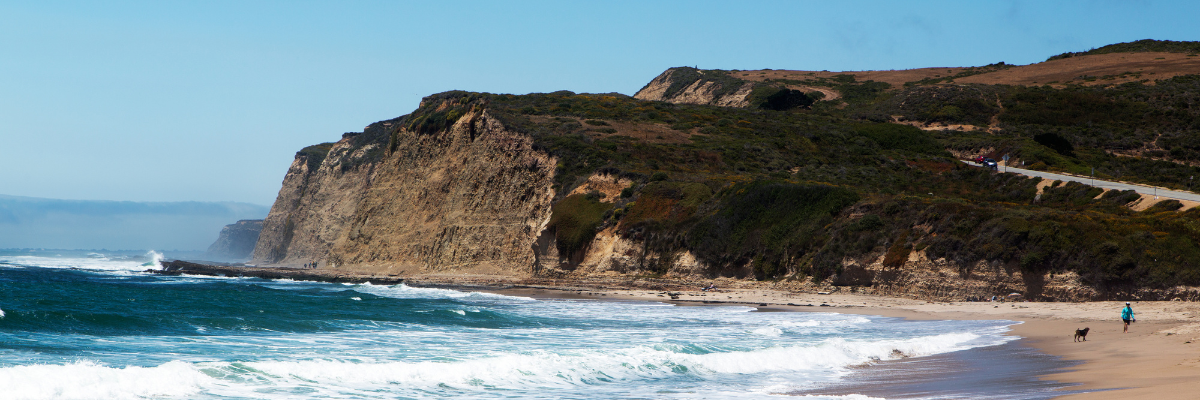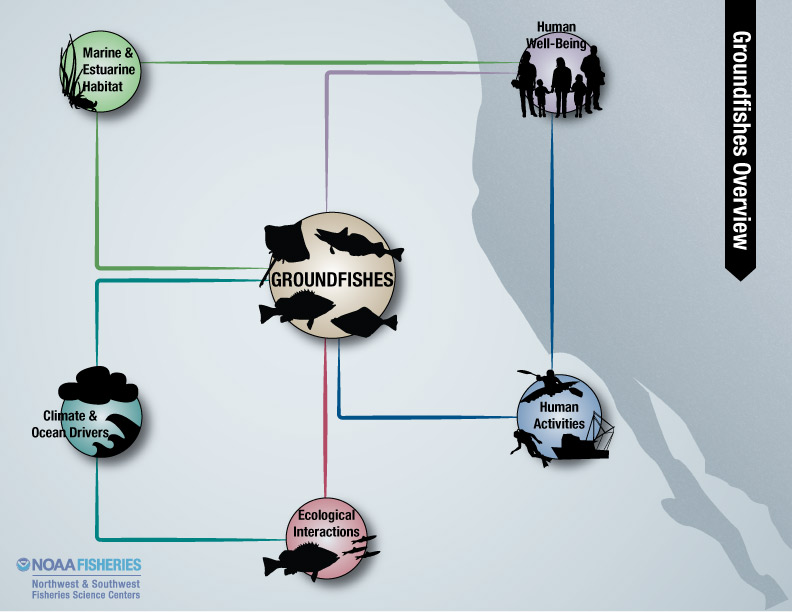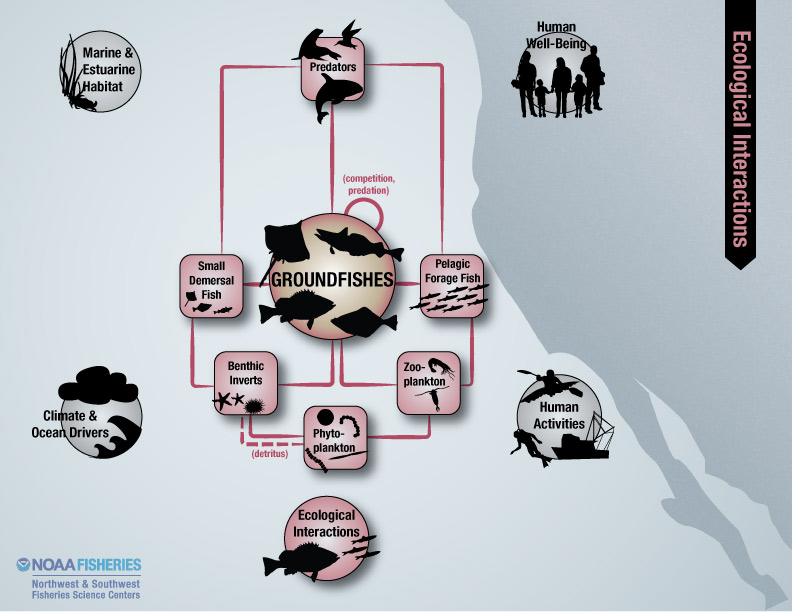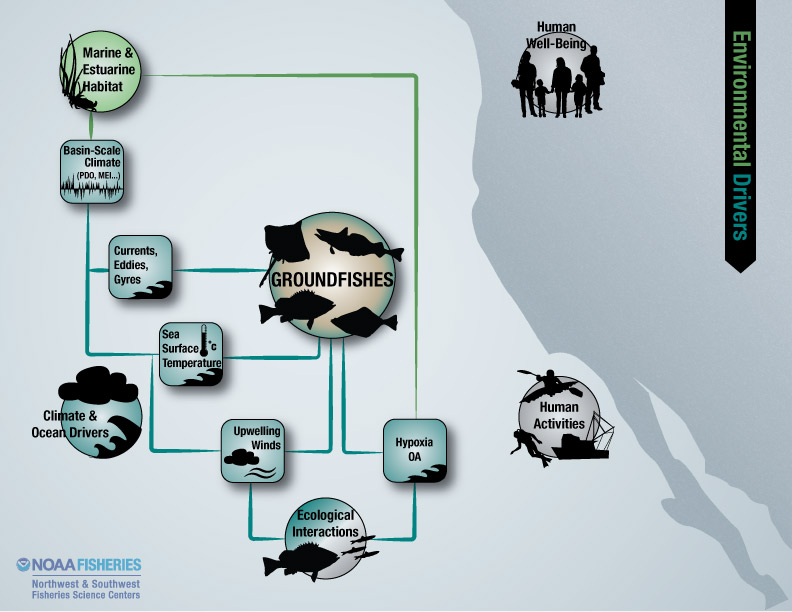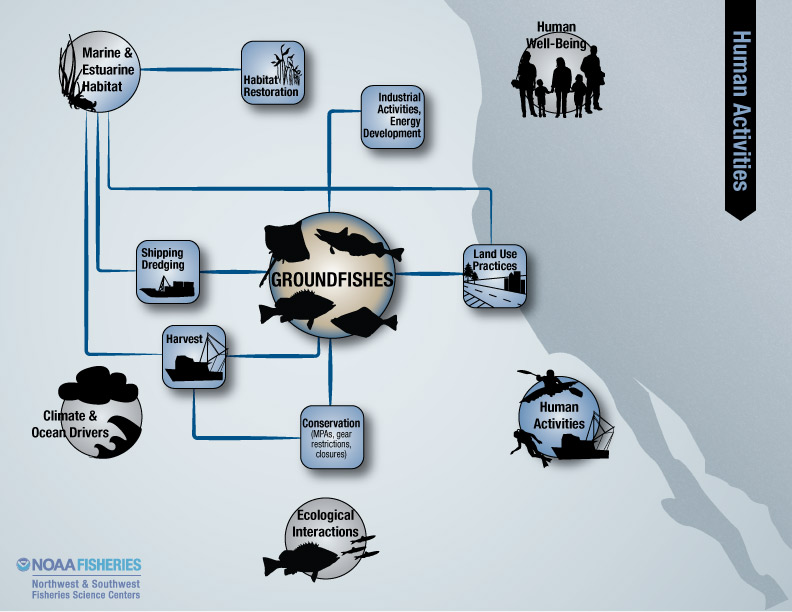Groundfishes are generally defined, as a group, by their close association with hard structures or the ocean bottom. They are distributed from shallow habitats near shore to the very deep slope. Some of the better known members include the rockfishes (Scorpaenidae), flatfishes (Pleuronectidae and Bothidae), and sablefish (Anoplopoma fimbria).
Groundfishes constitute a large fraction of the California Current ecosystem's biomass, and their harvest provides the economic engine for coastal communities in Washington, Oregon, and California.
